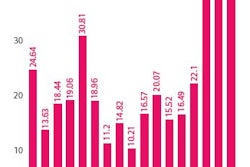
The new administration’s stance on trade has many companies reviewing their business operations. The potential for adding tariffs to imported goods as a way of dissuading offshore manufacturing is now encouraging brands to plan for adjusting their manufacturing operations. One such adjustment for companies to consider is bringing manufacturing back onshore to the U.S. As with other industry trends and disruptions that manufacturers, retailers and wholesalers have faced over the years, such as e-commerce and omnichannel, these changes can be seen as both a challenge and an opportunity.
While bringing operations back to the U.S. may be costly and time-consuming, brands that prepare now by refocusing on efficiency and agility can ease the process and benefit from the opportunity it presents. Implementing the latest technologies can support companies in this endeavor and also enable them to capitalize on newer business models that can surface with the new supply chain. A critical component to preparing for, while making the most of, this transition is upfront investment in digitizing every part of the supply chain process.
When it comes to manufacturing, digital transformation provides a tremendous advantage to the U.S. In fact, according to the Federal Reserve, American factories are now producing more than twice as much as they were in 1984, with one-third fewer workers. Applications that automate the supply chain process of designing and producing new products, tracking raw materials, selling through multiple channels, taking and fulfilling orders, and managing inventory can help keep costs down and improve return on investment (ROI) in the long run. There are some key technologies that can help with this transition to digitization, including such well-known examples as the Internet of Things (IoT) and mobile.
One critical component is enterprise resource planning (ERP). ERP provides real-time, enterprise-wide visibility and a single, holistic view of all inventory across all manufacturing and warehousing locations. With ERP, brands can keep track of inventory availability and supply chain operations, no matter the location of their manufacturers. This means they can manage both offshore and onshore operations through one system. These core capabilities enable brands to make supply chain adjustments quickly and accurately, creating the flexibility needed should a business need to move operations onshore.
Equally crucial to achieving supply chain agility is product lifecycle management (PLM) and sourcing. PLM and sourcing solutions provide comprehensive capabilities, enabling companies to facilitate collaboration among various stakeholders. Key players, from designers and technical developers to merchandisers and onshore/offshore raw material providers and manufacturers, can communicate using a centralized shared data model. This seamless collaboration allows for products to be launched quickly. Coupled with end-to-end workflow tracking, brands can very easily onboard onshore trading partners in case they need to change supply chain operations.
Robust ERP, as well as PLM and sourcing tools, can also help businesses capitalize on the opportunity that moving supply chain operations onshore presents. This transition means that brands can benefit from significant flexibility in managing supply and demand, and reacting to the market quicker, thus allowing them to pursue new business models. For example, onshoring raw materials and manufacturing results in significantly reduced lead times, which allows for manufacturers to develop products in small batches, test more variety of products in the market, and produce and sell more of the trending products. With a robust PLM and sourcing system in place, brands are then able to tweak product designs to react to the market and create more profitable products.
With the potential for new tariffs on imported goods under the new administration, brands currently manufacturing offshore need to be prepared for business changes that can affect their operations and bottom line. By preparing today with the right technology for efficiency and cost-effective operations, brands can streamline supply chain operations and seamlessly adapt to manufacturing location changes should legislative changes come to fruition. And, regardless of how these potential changes pan out, with the right technology to support agility and efficiency, companies can be better positioned to improve their existing supply chain visibility, allow for improved reaction to market changes and boost profitability.














